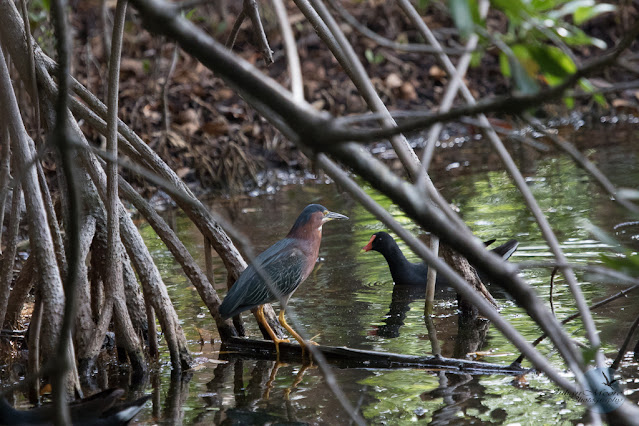 |
| The Black-caped Chickadee is still my favorite Canadian bird after two trips |
My second visit to Alberta turned out to be even better than the first, and for many reasons:
- This time, I had my entire family with me, and we all had a blast.
- I was able to spend extended, meaningful time with my uncle and aunt.
- And of course, the birding was simply fantastic, thanks to some local birders.
I want to say a big thank you to my uncle and aunt for opening their home and allowing my family and me to share their space for an entire month. Their hospitality made this trip truly special.
In total, I recorded 145 species, including 29 lifers. One person played a huge role in making that possible—Keith Miles. I first met Keith during my 2019 visit, and we quickly became friends. When he heard I was returning to Calgary, he promised to take me birding. True to his word, he took me out not once, but three times. Thanks to Keith, I was able to see several of my target birds, including the White-throated Sparrow (Zonotrichia albicollis) and the Boreal Chickadee (Poecile hudsonicus). He also surprised me with lifers I hadn’t expected, such as the Greater White-fronted Goose (Anser albifrons) and the Western Kingbird (Tyrannus verticalis). In all, he helped me secure 14 of my 29 lifers. Beyond the birds, as we travel to various hotspots, he allowed me to see Alberta’s stunning landscapes, from Brown-Lowery Provincial Park to Frank Lake. Thank you, my friend, for spending your time with me and helping make my vacation wonderful. Another friend I must acknowledge is John MacGillivray. Despite not being in the best of health, John still joined us for birding outings. His effort and companionship meant a lot, and I am truly grateful.
We faced challenges with canceled flights, both from Calgary to Toronto and from Toronto to Barbados, on our way back home - thanks Air Canada. One young lady, Sarah Al-ajele, at Calgary International Airport went above and beyond. Though she had already clocked out for the day, seeing how we were being turn around by the Air Canada checking staff, she returned to help us. She worked tirelessly on the phone for what felt like hours, eventually securing a way home for us and arranging accommodation near the airport. Her dedication turned a stressful situation into a manageable one, and we all owe her a big thank you.
These are just a few of the many people—named and unnamed—who helped us along the way. To all of them, I extend my deepest gratitude.
This won’t be my last visit to Calgary. In fact, I’m already thinking about returning in winter to try for some of those iconic cold-weather birds, including the Snowy Owl but I am not sure if I can handle the cold, but I am thinking about it.








































